#Ballet Russe de Monte Carlo
Explore tagged Tumblr posts
Photo

Ballerina Alicia Alonso prepares for the Ballet Russe de Monte-Carlo opening
Los Angeles Examiner, February 8, 1957
#ballet#dance#ballerina#1950s#makeup#cosmetics#alicia alonso#ballet russe de monte-carlo#1950s fashion#50s#ballet russe de monte carlo#50s fashion#vintage fashion#vintage#los angeles examiner#los angeles#backstage#ballet russe#photography#black and white#photo restoration
285 notes
·
View notes
Photo
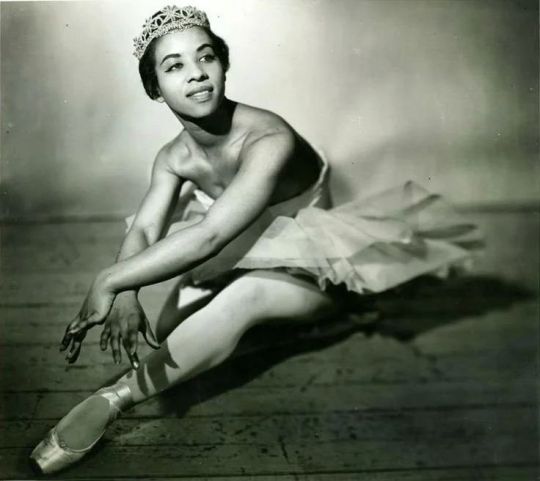
On This Day in New York City History February 2, 1935: Dancer Anne Raven Wilkinson (February 2, 1935 – December 17, 2018) was born in New York City, New York. Wilkinson has the distinction of being the first African-American woman to dance for a major classical ballet company.
Wilkinson was born into a middle class black family in Harlem. Her father was a medical doctor and her mother a ballet dancer. Her love for ballet was born from watching a performance of the Ballet Russe de Monte Carlo, a dance group that she would make history with.
Wilkinson would face difficulties in getting accepted to the Ballet Russe de Monter Carlo. Twice she was rejected before she was accepted at the age of 20 in 1955 by the director of the Ballet Russe de Monte Carlo, Serge Denham.
After leaving the group in the early 1960, Wilkinson would dance with a number row groups before retiring in 1974. That would be a short lived retirement. In the same year Wilkinson would join the New York City Opera and dance for them until 1985. In her later years she would serve as mentor to Misty Copeland who was a trailblazer in her own right. Copeland was the first African American to become a principal dancer at the American Ballet Theatre.
Wilkinson passed away on December 17, 2018 at the age of 83.
#AnneRavenWilkinson #BalletRusseDeMonteCarlo #AfricanAmericanHistory #AfricanAmericanStudies #BlackHistory #BlackStudies #BlackHistoryMatters #WomensHistory #WomensStudies #HERStory #DanceHistory #NewYorkHistory #NYHistory #NYCHistory #History #Historia #Histoire #Geschichte #HistorySisco
https://www.instagram.com/p/CoKa8wxuhZG/?igshid=NGJjMDIxMWI=
#Anne Raven Wilkinson#Ballet Russe de Monte Carlo#African American History#African American Studies#Black History#Black Studies#Black History Matters#Women's History#Women's Studies#HERstory#Dance History#New York History#NY History#NYC history#History#Historia#Histoire#Geschichte#HistorySisco
49 notes
·
View notes
Text

'costumes by dali for bacchanale, ballets russes de monte carlo, 1939' shot by horst p. horst in fashion and surrealism - richard martin (1987)
137 notes
·
View notes
Text

Ballerina Alexandra Danilova of the Ballet Russe de Monte Carlo, as then can-can dancer appearing in 'La Boutique Fantasque' at Covent Garden, London, 1934.
41 notes
·
View notes
Text
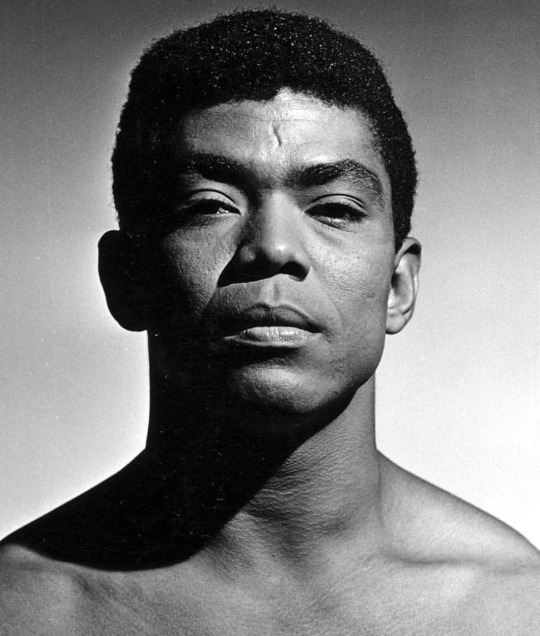
Today In History
Alvin Ailey was born on January 5, 1931, in Rogers, Texas. His experiences of life in the rural South would later inspire some of his most memorable works.
Ailey was introduced to dance in Los Angeles by performances of the Ballet Russe de Monte Carlo and the Katherine Dunham Dance Company, and his formal dance training began with an introduction to Lester Horton’s classes by his friend Carmen de Lavallade.
In 1958, he founded Alvin Ailey American Dance Theater to carry out his vision of a company dedicated to enriching the American modern dance heritage and preserving the uniqueness of the African-American cultural experience. He established the Alvin Ailey American Dance Center (now The Ailey School) in 1969 and formed the Alvin Ailey Repertory Ensemble (now Ailey II) in 1974.
Mr. Ailey was a pioneer of programs promoting arts in education, particularly those benefiting underserved African American communities.
CARTER™ Magazine
#carter magazine#historyandhiphop365#carter#wherehistoryandhiphopmeet#history#cartermagazine#today in history#staywoke#blackhistory#blackhistorymonth#alvin ailey
82 notes
·
View notes
Text
Balanchine's Coppelia
In today's Times, Roslyn Sulcas has an article about the New York City Ballet's production of Coppelia, which celebrated its 50th anniversary this summer. It had its premiere at the Saratoga Performing Arts Center during the company's annual residency.
One thing that Sulcas fails to mention is that the role of Swanilda was originally supposed to have been shared by Patricia McBride and Gelsey Kirkland. But when Kirkland announced she was leaving the company, Balanchine gave all performances to McBride
‘Coppelia’ at 50: When City Ballet Took a Turn for ‘Fun and Funny’
Original cast members look back at George Balanchine and Alexandra Danilova’s staging of the 19th-century ballet. “Everyone knows when something is good,” one said.
By Roslyn Sulcas Sept. 23, 2024, 5:02 a.m. ET
George Balanchine’s decision to stage the 19th-century ballet “Coppelia,” in 1974, was a surprise. Although Balanchine, the co-founder and leader of New York City Ballet, occasionally created narrative ballets, like “The Nutcracker” and “A Midsummer Night’s Dream,” the company was identified with a lean, no-frills approach to classical dance. It was turned toward innovation and experimentation, rather than story, characters and elaborate costumes.
But the three-act “Coppelia,” with its lush, melodic Delibes score, fairy-tale set and extensive ensemble dances, was anything but experimental. City Ballet audiences were anticipating it “with a mixture of delight, incredulity and awe, and in some cases horror,” the critic Marcia B. Siegel wrote, shortly before the ballet’s July 17 premiere at the Saratoga Performing Arts Center in upstate New York. But Balanchine, who asked his Russian compatriot (and former romantic partner), the ballerina Alexandra Danilova, to assist him on staging the ballet, knew what he was doing. “Coppelia,” starring Patricia McBride as the heroine Swanilda, Helgi Tomasson as her swain Franz and Shaun O’Brien as the eccentric toymaker Doctor Coppelius, was a roaring success, and has been performed regularly ever since. This season’s performances—Sept. 27 to 29 and Oct. 5-6—are City Ballet’s 50th anniversary celebration of the ballet.

Above: Patricia McBride rehearsing Coppelia, 1974. Seated at left are Susan Hendl, who led the Waltz of the Golden Hours in Act 3 and Stephanie Saland, McBride's understudy, who also performed Swanilda. Standing, center: Lincoln Kirstein, Patricia McBride, George Balanchine. Leaning against the piano at right is Rosemary Dunleavy, the ballet mistress. Seated at right are Colleen Neary, who led the Discord & War divertissement in the third act, and Merrill Ashley, who danced the Dawn solo in the same act. Photo: Martha Swope via NYPL/NY Times
“Coppelia” was first choreographed by Arthur Saint-Léon for the Paris Opera Ballet in 1870, and then reworked by Marius Petipa in 1884 into the version we know today. The story is simple: Franz and Swanilda are happily affianced village sweethearts, until Franz falls for a pretty girl who turns out to be a life-size doll—the creation of Doctor Coppelius. By the end of the tale, which involves Swanilda impersonating the doll, Franz has learned a lesson about fantasy and Swanilda has secured her man. Cue wedding celebrations.
Balanchine asked Danilova, a famous Swanilda with a pitch-perfect memory of the Petipa version she had performed with the Ballets Russes de Monte Carlo, to set Acts I and II, although he added a few new dances. But Act III, omitted in many productions, is his alone, a series of divertissements that are a pure-dance coda to the story.
Megan Fairchild, who first performed Swanilda at 19, said she loved the character’s sassy personality. “It’s a more casual vibe,” she said. “She’s not a princess, and that resonates.”
“We do a lot of ballets that are sophisticated and intellectual, for highly developed dance watchers,” said Wendy Whelan, City Ballet’s associate artistic director. “This is lighthearted and warm and easy to watch. It’s a reminder of the beginnings of ballet: the storytelling, the classical dance, the pantomime.” Plus, Whelan added, “it’s fun and it’s funny.” In interviews, five original cast members talked about their memories of creating the ballet. Below are edited excerpts.

Above: Patricia McBride in Act I, 1975. Swanilda's friends in the background are Judith Fugate, unidentified, Delia Peters, and Debra Austin. Photo: Martha Swope via NYPL
Patricia McBride, Swanilda Madame Danilova’s memory was uncanny. She remembered every step for every character in the ballet, and she danced full out when she showed you the choreography. She wanted me to play it straight when I impersonated the doll, not for laughs, and she was very precise about the musicality and phrasing, and the intent of each step. We hadn’t done a lot of mime at City Ballet, but she was so clear, she made it easy to learn. I loved that beautiful Russian port de bras she had. You could see what a great Swanilda she had been.
Balanchine was very specific about the way I held my arms and body as the doll. He never spoke about characterization, or how he wanted it to look, but the musicality of the choreography was so natural and wonderful. He would show you the steps and it was done.
Madame Danilova and Balanchine would keep going all day long, moving from one scene to the next, talking together. It was like seeing history, the two of them in the room together. Mr. B never interfered with her staging. I think he really respected her knowledge and memory.
Sometimes I would feel quite choked up to think of their lives and history together. They were both in their 70s, but they had so much energy and vitality and love, and they had a lot of fun together. They were so young in spirit. I felt so fortunate to work with them, and to see their respect for each other and their love of dance.

Above: Helgi Tomasson in Act 3, Saratoga, 1974. Photo: Martha Swope via NYPL
Helgi Tomasson, Franz I was surprised and not surprised at Balanchine deciding to do “Coppelia.” He spoke about programming like creating a menu; he knew that he had to give the public varied dishes. And I think he loved those old Petipa pieces.
We were up in Saratoga when he started to choreograph my first-act variation. For some reason, he didn’t feel it was right. John Taras, the ballet master, was sitting next to him, and asked if I knew Balanchine’s “Sylvia” pas de deux, also to Delibes music. I had danced it with the Harkness Ballet, and Balanchine said, “Do you remember the variation? Let’s see it.” I did it, and he said, “Good, let’s keep that!”
For me, most of the dancing was in the third act. I loved the way Balanchine constructed the coda and how Patty and I came in and out of the group. He created speedy yet articulate steps that I think he felt suited me.
I remember that Patty and I did every performance of “Coppelia” in the first week, seven or eight in a row. At some point during that first week, I was so tired that in the scene where Franz is supposed to be asleep, I actually fell asleep. But the whole experience was a highlight of my career.

Above: Alexandra Danilova rehearsing Patricia McBride. Photo: Martha Swope via NYPL
Jean-Pierre Frohlich, Corps de Ballet I had been in the company two years and was just 19. I remember so well Balanchine and Danilova standing in front of the mirrors at the front of the studio. She was so elegant. I knew they had been an item in the Diaghilev era, and I was trying to see how those dynamics would have worked! You could see she still adored him.
Danilova loved to demonstrate steps. She wore ballet slippers with a little heel and ribbons. She had beautiful legs, and liked showing them off. She loved men; she was harder on the women than the men.
There was a very good ambience in the studio. They spoke in English, maybe occasionally in Russian, but I think they wanted the dancers to understand. She would never contradict him or say no to his suggestions. I felt she was very happy to be involved. But he was also very accommodating; he knew how much she had to offer.

Above: Gelsey Kirkland, originally scheduled to share the role of Swanilda with McBride, at rehearsal with ballet mistress Rosemary Dunleavy. Photo: Martha Swope via NYPL
Christine Redpath, Prayer Solo Madame Danilova was so charming. She would wear a gorgeous green sleeveless leotard, with a scoop neck and back, a belt and chiffon skirt, hiked up to show her fantastic legs, and her hair coifed with a little scarf tied behind her ears. You could see she still loved to dance, and it was very sweet to see she still loved Balanchine.
[In “Coppelia,” three allegorical female solos, Prayer, Dawn and Spinner, come near the start of Act III. ]
I learned my solo with Balanchine, but Madame Danilova was there because she had danced the Prayer solo in Russia. I think what he created on me was based on that. Balanchine never spoke about the meaning of the solo, but all the gestures are “up,” and the music seems spiritual to me. If you take what he has given you, it’s all there to tell you who you are and what this is.
At some point he showed me a picture of Marie Taglioni in a blue skirt and little top with puffed sleeves and a horseshoe crown with stars, and that’s what Karinska designed for my costume.
Danilova sent me a lovely card and flowers on the opening night. We were all very excited. Everyone knows when something is good.

Above: Merrill Ashley in the "Dawn" variation in Act 3. The costumes are the originals; they were replaced when the ballet was performed in New York the following year. Photo: Martha Swope via NYPL
Merrill Ashley, Dawn Solo The solo he made for me was fiendishly difficult, and it never became easier. There was fast footwork, lots of changes of direction and it ended in plié on pointe on one foot. I liked dancing it, but it scared me. There was one bit on a diagonal that was impossible, and it repeated three times. Eventually I said, I’m really struggling, would you consider changing it, and he said, “Dear, it’s yours, do what you want.”
Danilova choreographed the introduction to the solo, and that had more of a feeling of gentleness, awakening, offering something. Then the sun comes up over the horizon and, boom! Pyrotechnics!
You felt that Balanchine and Danilova were really friends and colleagues. He turned to her a lot; he really respected the knowledge and tradition she brought. I loved watching their interaction.

Above: Children from the School of American Ballet in Coppelia. The pink costumes replaced the golden ones used in Saratoga. Photo: Martha Swope via NYPL
Charlotte d’Amboise, Child Dancer David Richardson, a dancer in the company, was in charge of the kids, and to my twin sister and me he was God. We knew Balanchine was famous, but it was all about David. I was in the big dance in the last act, which I loved. We wore pink tutus and it was really dancey, and we had a whole section that was just us.
Balanchine really loved to have children involved and he could choreograph for them. He did it so easily, almost as if he didn’t think about it, just “go here, do this.” But he must have planned it.
At the first performance in Saratoga, one side of the elastic on my ballet slippers came off and was dangling while I was dancing. All I remember is thinking, David is seeing this—and he was so mad at me. I have never not paid attention to my shoes again!
I did pretty much all of the Balanchine ballets that had children in them, but “Coppelia” was my favorite. You felt like a ballerina, you had to have technique to dance it, and you felt like you were part of the corps de ballet. The best part of being a kid in these ballets was dancing next to these ballerinas and dancers who are goddesses and princes. To be surrounded by high art, to be part of it, affects you forever.
#Balanchine#Coppelia#Balanchine's Coppelia#Alexandra Danilova#Patricia McBride#Helgi Tomasson#Merrill Ashley#Christine Redpath#Jean-Pierre Frolich#Charlotte d'Amboise#Gelsey Kirkland#Saratoga Performing Arts Center#SPAC
10 notes
·
View notes
Text
I believe the first ballet to A Midsummer Night’s Dream was Marius Petipa’s version for the Maryinsky Ballet in St. Petersburg in 1876. It was this that Michel Fokine in 1906 adapted and amended for students of the Imperial School. The cast included Vaslav Nijinsky, and it proved one of the very early works of Fokine to capture the attention of the impresario Serge Diaghilev. Fokine later reworked the score into Les Elfes for his own company at the Metropolitan Opera House in 1924. In 1933 Col. W. de Basil’s Ballets Russes de Monte Carlo staged David Lichine’s first ballet, Nocturne, using not Mendelssohn but Rameau music, with Alexandra Danilova as Titania, Léonide Massine as Oberon, and Lichine himself as Puck.
But the four most interesting versions for me are George Balanchine’s for New York City Ballet in 1962, Frederick Ashton’s for Britain’s Royal Ballet in 1964, John Neumeier’s for the Hamburg Ballet in 1977, and Christopher Wheeldon’s for the Colorado Ballet in 2000. All, except for the Ashton, are full-evening ballets. Wheeldon’s version not unexpectedly owes something to both Ashton and Balanchine. Neumeier’s version—which is by far the most adventurous and original and incorporates modern music by György Ligeti—has also been staged by the Paris Opera Ballet and the Royal Danish Ballet.
#shakespeare#william shakespeare#dance#ballet#shakespeare and dance#balanchine#midsummer#a midsummer night's dream
11 notes
·
View notes
Text













Monte Carlo A living legend
Frédéric Mitterand
The Vendome Press, New York 1994, 176 pages, 80 phot.in rich duotone, ISBN 9780865659537
euro 60,00
email if you want to buy [email protected]
Monte Carlo, a city so opulently devoted to money and worldly pleasure that Queen Victoria refused to cast her royal eyes upon it, proves to have considerably more going for it than the two sensational pursuits just cited. Not only is the Principality of Monaco a tax haven for the high-rolling superrich: it is also a haven for the high-rolling superrich; it is also a haven for those who enjoy the natural beauties of the Mediterranean sky, sea, and air, even the science of oceanography at its most distinguished. On a more human scale, there are also, in great abundance, the wonders of superb Belle Epoque architecture, world-class ballet and opera, young people with lean, healthy bodies clad in revealing leisure wear, and mature ones with wit, charm, a generous spirit, and variable luck at the gaming tables. An ancient fortified site ruled by one of Europe's oldest and most enlightened dynasties - the Grimaldi - Monte Carlo abounds in history, no part of which is more interesting than the story of how Pierre and Louis Blanc transformed a tiny feudal enclave - sun-baked, rock-bound, impoverished - into the world's greatest gambling empire under the aegis of the famous SBM (Societe des Bains de Mer). Thanks to the grandiose vision of these entrepreneurs, a vision intimately linked to the development of travel by rail, Monte Carlo very quickly became a legend in its own time, along with several generations of legendary visitors and "residents" - everyone from Edward VII of England and legions of Russian Grand Dukes to Coco Chanel, Calouste Gulbenkian, Sergei Diaghilev and the Ballets Russes, Errol Flynn, Tamara de Lempicka, Karl Lagerfeld, Aristotle Onassis, Sophia Loren, and, of course, Princess Grace, now the most legendary of all the glittering people ever associated with the "Grimaldi Rock." All live again in Monte Carlo, and annotated album of irresistibly fascinating photographs selected from a treasure-trove archive assembled over the years by the SBM but never before opened for publication.
23/08/24
#Monte Carlo#living legend#SBM archive#photography books#Sophia Loren#princess Grace#fashionbooksmilano
6 notes
·
View notes
Text
In the Ballet room for my trainings and transmitting my experience to the young dancers through my “Méthode Russe de Monte-Carlo de Lorena Baricalla”
An important mission to inspire and motivate!
#lorenabaricalla #LB










3 notes
·
View notes
Photo

“Grace Kelly was great however I think people overstate her role in Monaco quite a bit. All what makes Monaco famous: the casino, the marina full with yachts, the Grand Prix (Formula One), the Opéra, the grand hotels, the Bal de la Croix-Rouge, the Circus, the exile for Russian aristocracy, the famous Ballets Russes by Sergey Diaghilev, the posh shops at the Place du Casino and the Avenue de Monaco, the world-famous Oceanographic Institute in Monte-Carlo: all and everything was waaaaay there before Grace Kelly ever came in the picture. Even the Bal de la Rose (of which the revenues go to the Princess Grace Foundation) was established before Grace came on the scene. What Grace did was the normal work that a Princess or royal lady is expected to do. It is part of the traditional royal role particularly for female royals, to promote charities. She had connections in the US and glamour because of her looks and film career, but I would not say that she stood out more than other royal ladies. What her "legacy" is, apart from her three children and wedding dress is hard to substantiate. She for sure was drop dead glamorous, but so were her contemporaries in those years with fabulous couture and very feminine mode.” - Submitted by Anonymous
31 notes
·
View notes
Text

Théatre de Monte-Carlo, Ballet Russe; Nijinsky. 1911
Lithograph in colours by Jean Cocteau
77 notes
·
View notes
Text
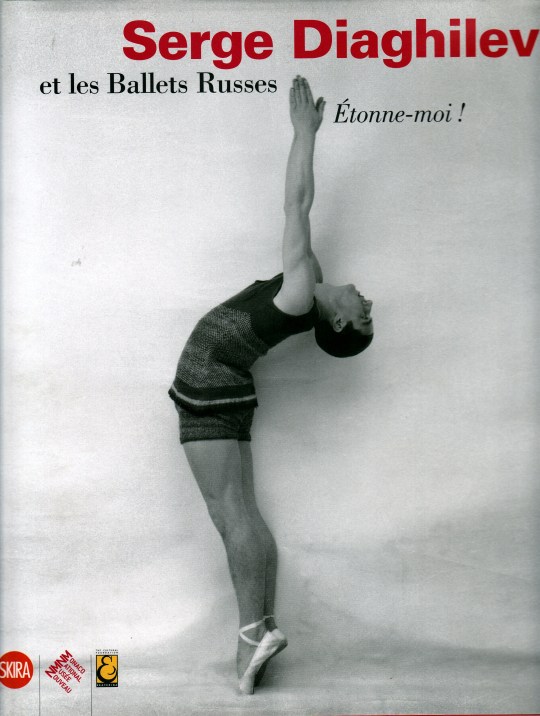


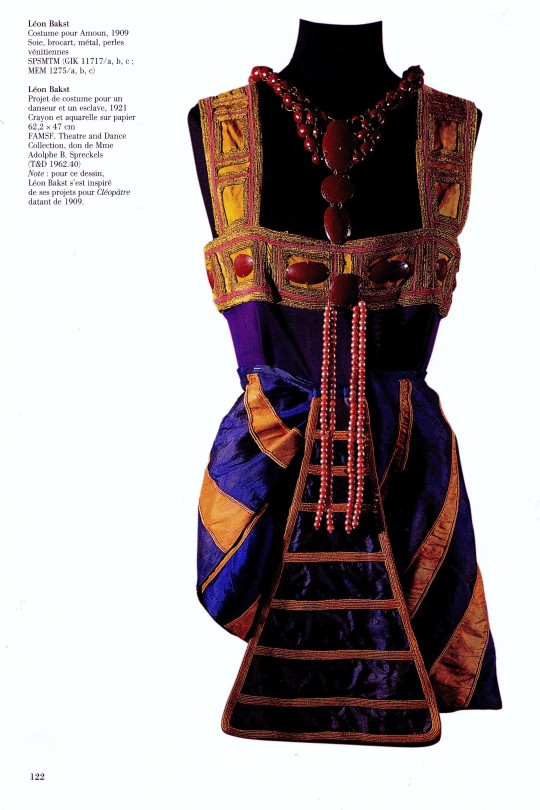


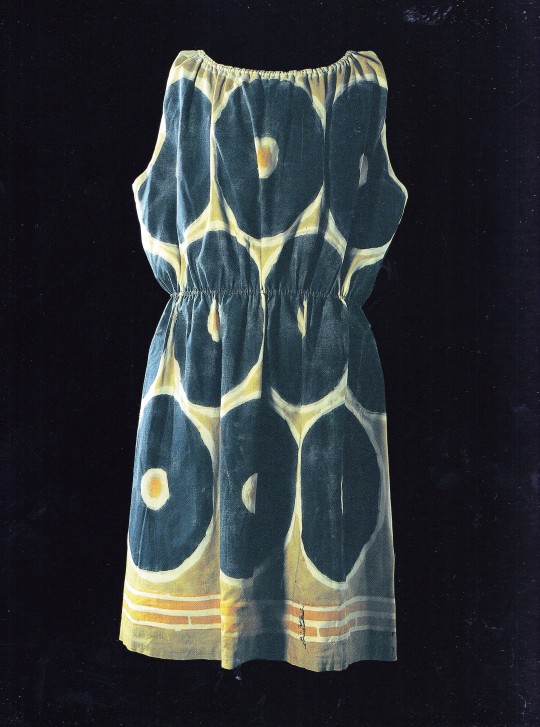




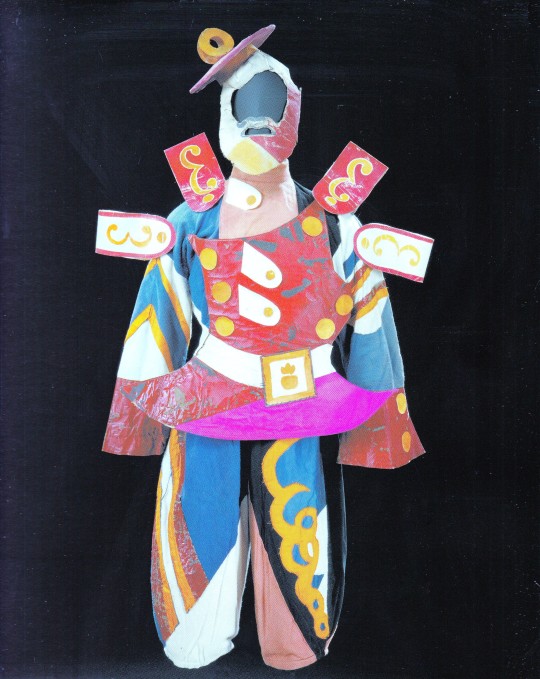
Étonne-moi! Serge Diaghilev et les Ballets Russes
sous la direction de John Bowlt, Zelfira Tregulova, Nathalie Rosticher Giordano,
Skira, Milano 2009, 339 pagine, 25 x 29 cm, 300 ill.colori, ISBN 9788857200910
euro 50,00
email if you want to buy [email protected]
Exposition Monaco, Moscou 2009
En mai 1909, Serge Diaghilev stupéfia le monde de la danse avec les premières représentations parisiennes de ses ballets, combinaison sans précédent de grâce et de vitalité, d’originalité et de raffinement technique. Monte-Carlo, qui fut pour Diaghilev un important centre d’activités pendant l’existence de la compagnie connue sous le nom de Ballets russes, célèbre ce centenaire par une grande exposition comptant plus de 300 oeuvres d’art ayant trait aux Saisons russes de 1909 à 1929. L’exposition s’accompagne d’un catalogue entièrement illustré auquel ont contribué les plus grands spécialistes de l’histoire du ballet et des arts visuels russes. Les productions légendaires du Pavillon d’Armide, de Cléopâtre, de Schéhérazade, du Sacre du printemps de Petrouchka, de Parade et de bien d’autres ballets revivent à travers des projets de décors, des costumes, des tableaux, des sculptures, des photographies, des éditions de luxe, des programmes et des objets de culture matérielle. Les oeuvres d’art proviennent d’une grande variété de collections publiques et privées, nationales et internationales, telle la collection Fokine du Musée du théâtre de Saint-Pétersbourg. Les créations scéniques de Diaghilev s’accompagnent d’un nombre important de tableaux, de dessins et d’autres objets contextuels qui ont caractérisé la renaissance culturelle russe dans les premières décennies du XXe siècle. L’exposition et son catalogue s’inscrivent dans une plus vaste série de manifestations ayant trait à l’activité de Diaghilev à Monte-Carlo et à Moscou, comprenant des spectacles de ballet, des films, des conférences et un colloque international.
30/05/23
orders to: [email protected]
twitter: fashionbooksmilano
instagram: fashionbooksmilano, designbooksmilano tumblr: fashionbooksmilano, designbooksmilano
#Serge Diaghilev#1909-1929#Ballets Russes#Monaco National Musée#art exhibition catalogue#Léon Bakst#Jean Cocteau#vaslav nijinsky#Nijinsky#fashion books#fashionbooksmilano
27 notes
·
View notes
Text
Maria Tallchief
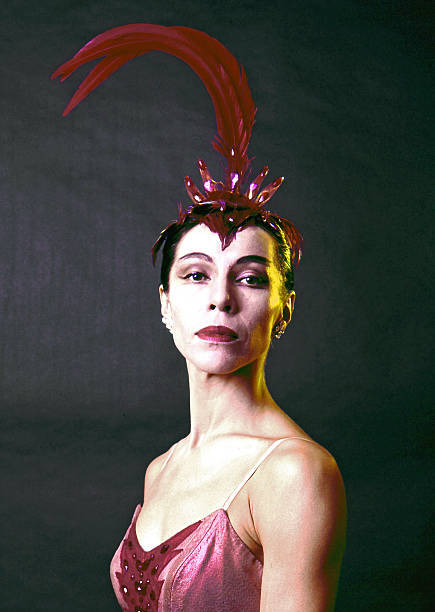
Maria Tallchief è stata una delle più importanti ballerine del ventesimo secolo e la prima danzatrice nativa americana della storia.
Osannata per la sua velocità, energia e passione unite a una grande abilità tecnica, è stata nominata donna dell’anno dal presidente degli Stati Uniti Eisenhower nel 1953, inserita nella National Women’s Hall of Fame, ha ricevuto la National Medal of Arts e il Kennedy Center Honor alla carriera.
È stata la prima ballerina americana a esibirsi all’Opéra di Parigi e al Bolshoi di Mosca.
Nacque il 24 gennaio 1925 a Fairfax, in Oklaoma. Il padre, Alexander Joseph Tall Chief era un ricco discendente della tribù Osage mentre sua madre, Ruth Porter, aveva origini scozzesi e irlandesi.
Trascorse i primi anni della sua vita in una casa in collina che affacciava sulla riserva indiana.
L’amore per la musica e la danza venne coltivato sin da quando era una bambina. Quando la famiglia si trasferì a Los Angeles, per consentire alle figlie di studiare, venne iscritta alla scuola di danza della coreografa russa Bronislava Nijinska. Era ancora un’adolescente quando si convinse che quella era la strada che voleva intraprendere, abbandonando gli studi di pianoforte, iniziati da piccola.
A 17 anni, con l’insegnante e amica di famiglia Tatiana Riabouchinska, si trasferì a New York, dove entrò nella compagnia Ballet Russe de Monte Carlo.
In un’epoca in cui danzatori e danzatrici statunitensi adottavano nomi di scena russi, lei portava avanti con orgoglio il suo patrimonio indiano. Ha sempre rivendicato il suo lignaggio opponendosi a stereotipi e discriminazioni nei riguardi delle persone native.
Lo stato dell’Oklaoma l’ha celebrata più volte e il 29 giugno 1953 le aveva dedicato una giornata, il Maria Tallchief Day.
Nel 1944 ha cominciato a danzare dal coreografo George Balanchine, suo futuro marito, con cui ebbe inizio una fortunata collaborazione artistica durata anche dopo la loro separazione.
Quando lui, nel 1947, distaccatosi dal Ballet Russe de Monte Carlo, aveva creato la sua compagnia, il New York City Ballet, Maria Tallchief ne divenne la star incontrastata.
L’unione tra le difficili coreografie del compagno e il suo appassionato modo di danzare rivoluzionarono il balletto. Era perfetta per i ruoli che richiedevano atletismo, velocità, aggressività. La sua elettrizzante interpretazione in L’uccello di fuoco nel 1949, la rese una vera star.
La sua Fata Confetto nello Schiaccianoci ha contribuito a trasformare il balletto in un classico annuale di Natale.
Ha collaborato con Balanchine fino al 1965 mentre faceva tour mondiali con altre compagnie come il Balletto dell’Opera di Chicago, il San Francisco Ballet, il Balletto Reale Danese, il Balletto di Amburgo e l’American Ballet Theatre. Ha rappresentato Anna Pavlova nel film Million Dollar Mermaid con Esther Williams.
Nel 1962, durante il suo debutto sulla televisione americana al Bell Telephone Hour, è nata la collaborazione con Rudolf Nureyev. Insieme hanno ballato il pas de deux da Infiorata a Genzano di August Bournonville.
Dopo il ritiro dalla danza, nel 1966, si era trasferita a Chicago dove ha diretto la Lyric Opera fino al 1979.
Nel 1981, ha fondato, con la sorella Marjorie, il Chicago Lyric Opera Ballet, di cui è stata direttrice artistica fino al 1987.
Dal 1990 è stata consulente artistica onoraria del Chicago Festival Ballet di Ken Von Heideke.
È morta a Chicago a causa delle complicanze di una rottura al bacino, l’11 aprile 2013, aveva 88 anni.
La sua vita ha ispirato diversi documentari e biografie.
2 notes
·
View notes
Text

...January 24, 1925 ~
Remembering America’s first Prima Ballerina, MARIA TALLCHIEF, today on her birthday ❤️
Born on the Osage Reservation in Oklahoma, Tallchief began taking dance lessons at an early age. The family moved to Los Angeles, and at age 12 she began training with dancer/choreographer Bronislava Nijinska. Her dance career was beginning to accelerate, and at age 17, Tallchief found herself in New York City, as a member of the Ballet Russe de Monte Carlo. Then in 1944, she met with, and began working under, George Balanchine. In August of 1946, Tallchief and Balanchine married each another.
In 1947, Tallchief became the first American to perform with the Paris Opera Ballet. Back in the States, in October of 1947, she then became the first Prima Ballerina of the New York City Ballet. In 1949, Balanchine created the title role for Tallchief, in the electrifying “The Firebird” - with scenery and costumes by none other than Marc Chagall. This was the role that put her on top of the ballet world.
In 1952, she took some time off to go to Hollywood, appearing as the dancer Anna Pavlova in the Esther Williams movie “Million Dollar Mermaid”, a retelling of the life of Australian swimmer/actress Annette Kellermann. More demanding roles followed in the years to come.
In 1954, Balanchine took an obscure ballet titled “The Nutcracker”, completely restaged it, and put Tallchief into the role of the Sugar Plum Fairy, transforming it into the classic it is today. More roles followed: the Swan Queen in “Swan Lake”; Eurydice in “Orpheus”; and principal roles in numerous plotless vehicles. She was Rudolf Nureyev’s partner for his 1962 American debut, which was broadcast on national tv.
Tallchief retired from dancing in 1966, moving to Chicago and founding the ballet school in that city’s Lyric Opera. She also became the artistic director of the Chicago City Ballet. She received the Kennedy Center Honor in 1996. Maria Tallchief passed away in 2013 at age 88.
Her legacy as a dancer is one who was electrifying, passionate and fiery, but also one of unsurpassed strength and technical brilliance.
Tallchief is honored as one of the “Five Moons”, i,e, the five Oklahoma-born Native American ballerinas, which include Maria Tallchief (Osage); sister Marjorie Tallchief (Osage) - and who sadly just passed away in 2021 at age 95; Yvonne Chouteau (Shawnee); Moscelyne Larkin (Eastern Shawnee/Peoria); and, Rosella Hightower (Choctaw).
PHOTOS -
L: Photo still of Miss Tallchief from the 1952 movie "Million Dollar Mermaid", where she portrays Anna Pavlova.
R: Miss Tallchief in her role of "Eurydice" in George Balanchine's production of "Orpheus"; photo by George Platt Lynes, 1948.
4 notes
·
View notes
Text

The British-American dancer Frederic Franklin in “Le Corsaire” (Ballet Russe de Monte Carlo?)
3 notes
·
View notes
Photo

Anne Raven Wilkinson (February 2, 1935 – December 17, 2018) In August 1955 she became the first African American woman to receive a contract to dance full-time with a major ballet company, the Ballet Russe de Monte Carlo of New York City. She was promoted to soloist during her second season with the troupe and remained with the company for six years. She was born in New York City to Anne James Wilkinson and Dr. Frost Bernie Wilkinson, a dentist. She had been a fan of ballet since the age of five. On her ninth birthday, an uncle gave her the gift of ballet lessons at the Swoboda School where she studied under the direction of well-known dancers from Russia’s Bolshoi Theatre. She later transferred to the Professional Children’s School in the Bronx where she continued her training, remaining there through her last two years of high school. She first auditioned for a position with the Ballet Russe de Monte Carlo in 1954. Twice she was rejected but she persevered. On her third try, Sergei Denham, the company’s director, informed her that she would be accepted into the Company. She was asked not to publicize her race, she often had to wear white makeup onstage to conceal her racial identity. In 1957, the owner of a hotel in Atlanta asked if she was black, she refused to lie, and she was barred from staying at the hotel with the rest of the company. Two members of the Ku Klux Klan bolted on stage, interrupting a performance in Montgomery, asking “Where’s the nigra?” When none of the Company members responded to them, the men left. As word of her racial identity became known, she was not allowed to participate in performances in southern cities partly to ensure her safety. In 1961, she left the Ballet Russe Company and was never hired by another American ballet company again. She joined a convent in Font de Lac, Wisconsin. She got a soloist contract with the Dutch National Ballet, where she stayed for seven years. In 1973, she returned to the US where, between 1974 and 1985, she performed with the New York City Opera as an extra dancer. #africanhistory365 #africanexcellence https://www.instagram.com/p/CoKVPgJrshO/?igshid=NGJjMDIxMWI=
2 notes
·
View notes